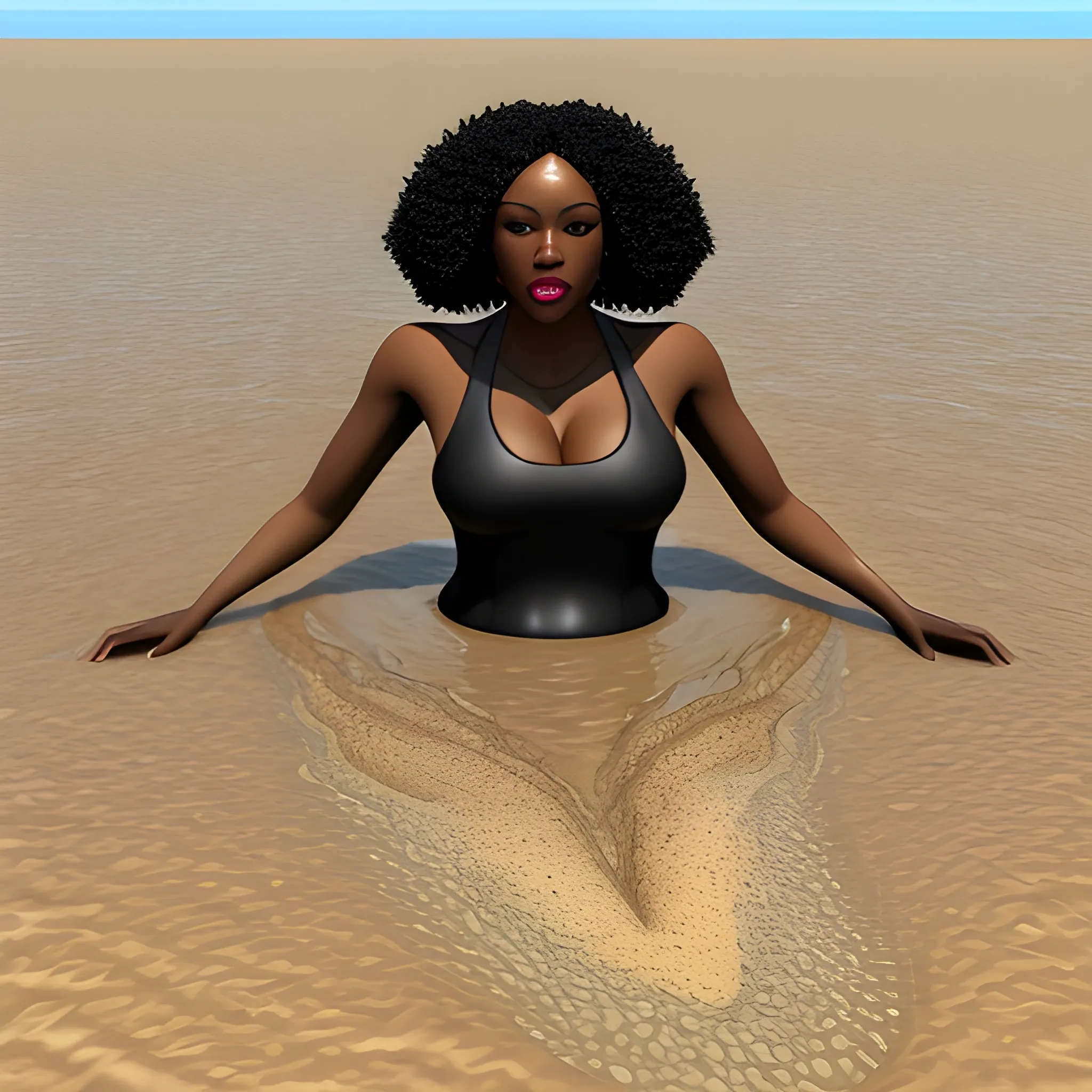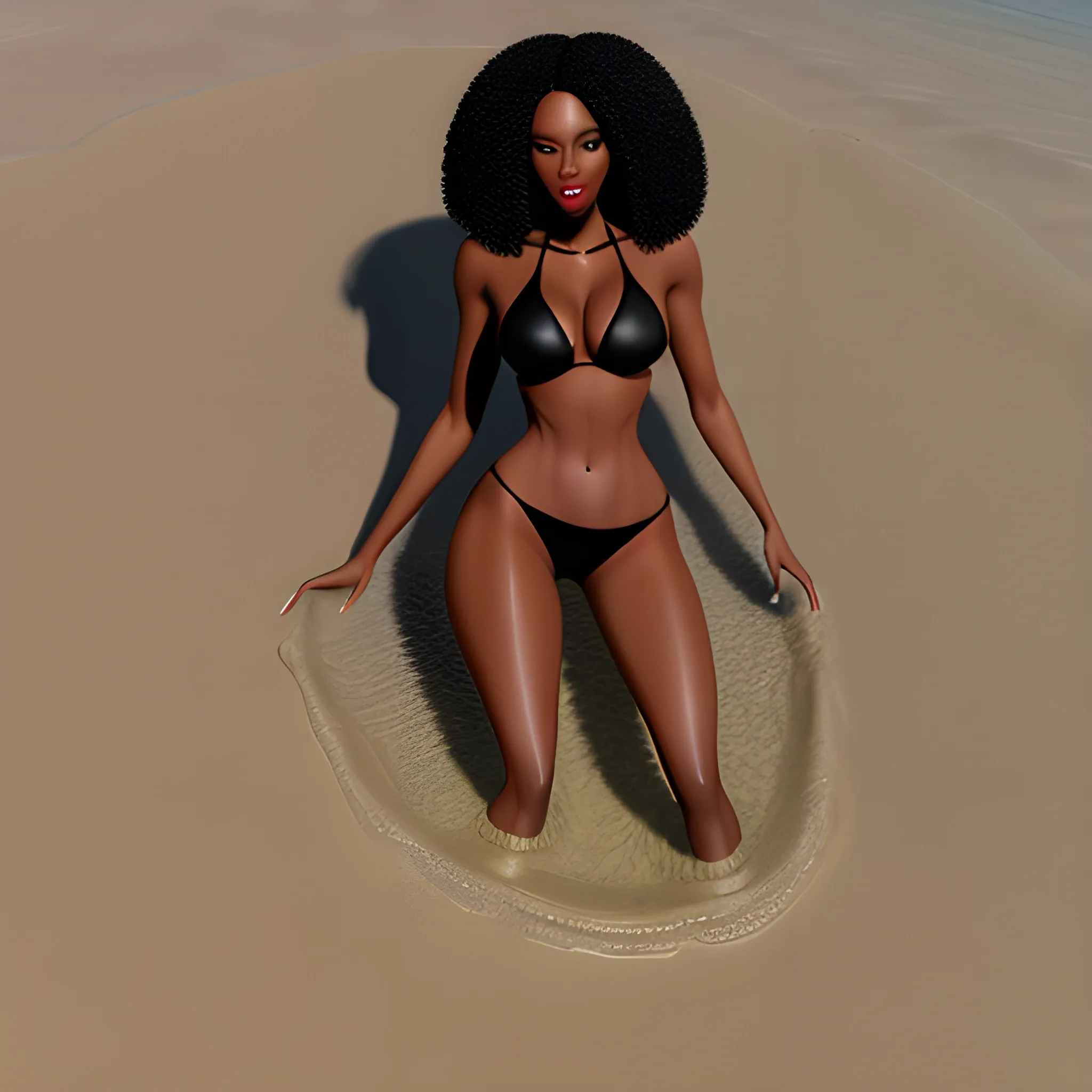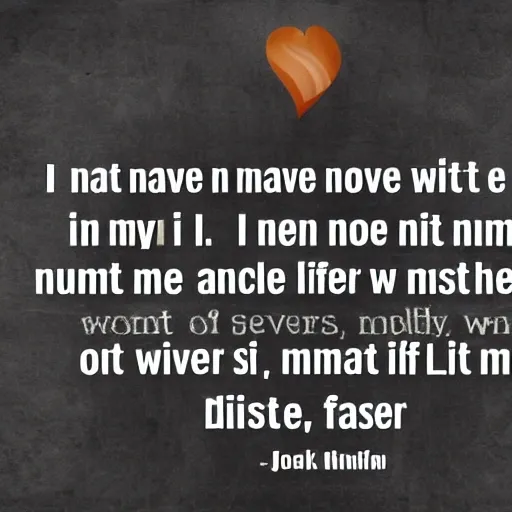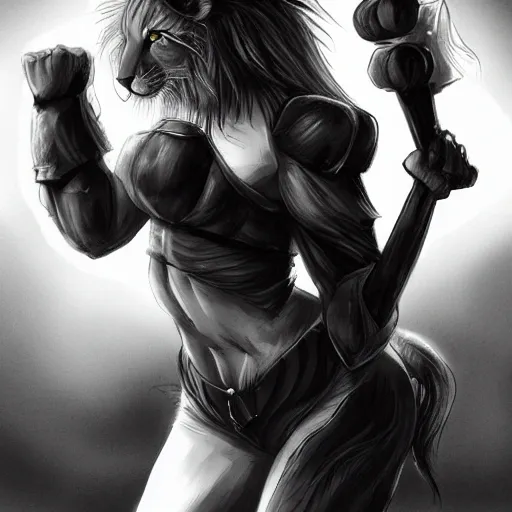Search Results for quick
Explore AI generated designs, images, art and prompts by top community artists and designers.

Design a water bottle that effortlessly fits in one hand , featuring a sleek and modern design with vibrant and blue wavy colors and patterns that appeal to the user's sense of style. The bottle should be constructed with a durable and lightweight material for both the lid and body , ensuring ease of portability. Emphasize convenience by incorporating a one-touch opening mechanism for quick access to hydration on-the-go. The overall design should seamlessly blend functionality with aesthetics , offering a leak-proof and insulated solution for a refreshing and hydrating experience , Pencil Sketch ,
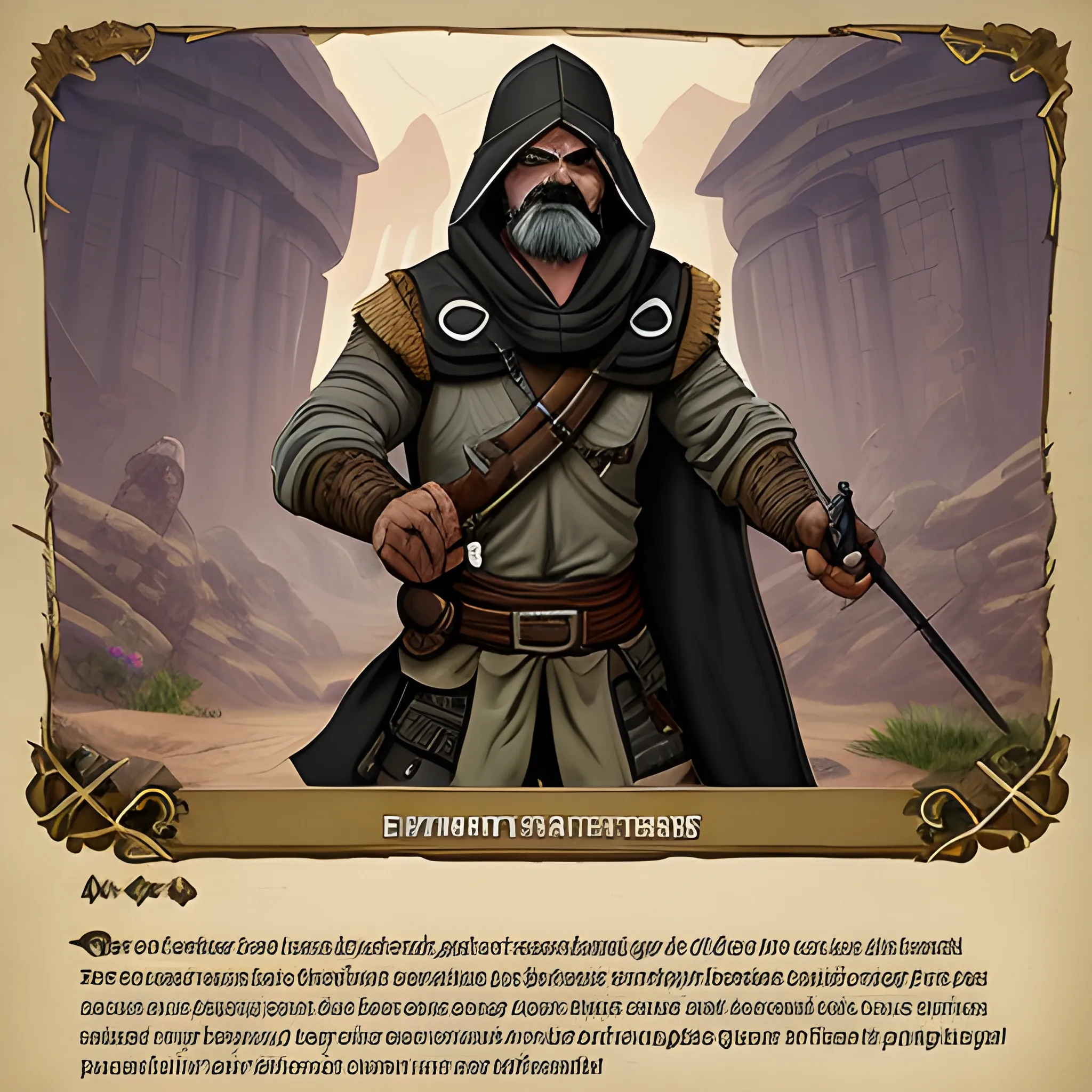
Appearance: The Bandit Leader is a commanding figure , exuding an air of authority and charisma that sets them apart from the ordinary members of their gang. They dress in more elaborate and well-maintained clothing , often adorned with stolen jewelry or symbols of power. Their attire may be a mix of practicality and ostentation , showing off their wealth and status while ensuring they can move freely in combat. The Bandit Leader may have a distinctive and fearsome appearance , with battle scars or an imposing physical presence that demands respect from their followers. Features: The Bandit Leader is not only a skilled fighter but also a cunning strategist. They possess tactical knowledge , able to plan and execute ambushes and raids with precision. The Bandit Leader is usually armed with high-quality weapons , whether a finely crafted sword or a specially customized bow. Their combat skills and combat prowess make them a formidable adversary in one-on-one combat , and they often lead from the front during raids. Habitat: The Bandit Leader's territory is typically a well-hidden and fortified stronghold , strategically chosen to offer both defense and escape routes. These hideouts may be deep in the wilderness , atop rocky cliffs , or concealed in dense forests. In your DND world , the Bandit Leader might operate from a secluded fortress , a smuggler's den , or even from within the heart of a city , using their influence to conceal their true identity. Behavior: The Bandit Leader is a cunning and ambitious individual , driven by a desire for wealth , power , and control. They are ruthless in their pursuit of dominance , often betraying or eliminating rivals to consolidate their position. The Bandit Leader can be charismatic and manipulative , skilled at inspiring loyalty among their followers through promises of riches and protection. However , they are also quick to punish those who fail them or show any signs of disloyalty. Role in the World: In your DND world , the Bandit Leader serves as the central antagonist to adventurers seeking to thwart criminal activity and restore law and order. They may be the head of a notorious bandit gang , a powerful crime lord with influence over multiple territories , or a charismatic rebel leader opposing a tyrannical regime. Encountering the Bandit Leader in your campaign can be a climactic and high-stakes event , representing the culmination of the adventurers' efforts to confront criminal activity and protect innocent lives. The Bandit Leader's defeat might serve as a major turning point in the campaign , leading to the dismantling of the gang or the exposure of a larger conspiracy. The presence of a Bandit Leader in your campaign world adds an element of intrigue and danger to the setting. Players will need to gather information , form alliances , and carefully plan their approach when confronting such a formidable foe. Engaging with the Bandit Leader and their gang can create thrilling and memorable encounters , providing players with opportunities for cunning negotiation , daring heists , and epic battles that will shape the course of your DND world's history ,
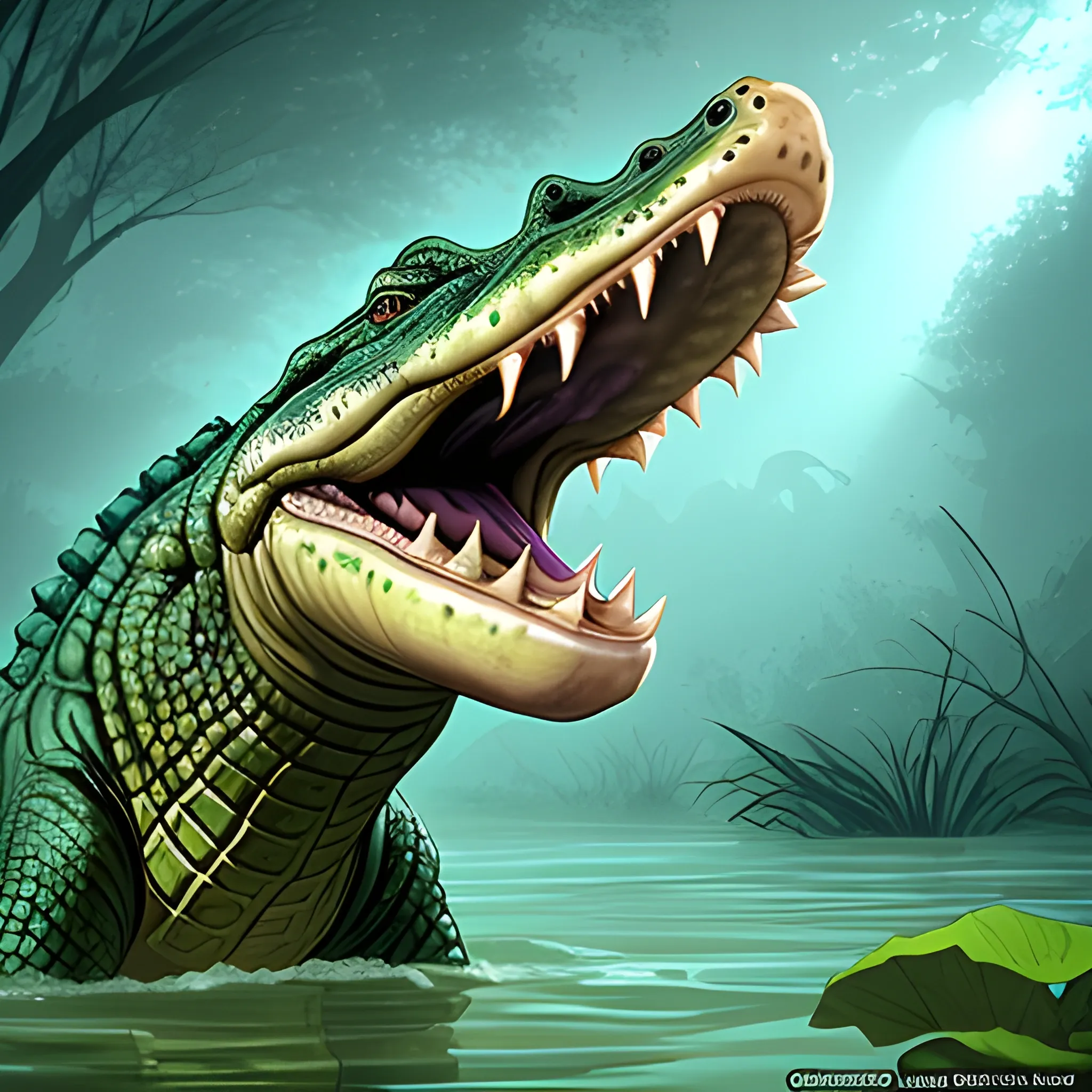
Appearance: The Crocodile is a large and powerful reptile , known for its distinctive long snout , sharp teeth , and armored body. Its scales can have various shades of green , brown , or gray , blending in with the murky waters and marshes it inhabits. The Crocodile's eyes and nostrils are positioned on the top of its head , allowing it to remain mostly submerged while still keeping a watchful eye on potential prey. Features: The Crocodile is an apex predator in aquatic environments , using its powerful jaws to seize and drag its prey underwater. It possesses incredible strength and resilience , making it a fearsome hunter and a challenging opponent for adventurers who venture into its territory. Crocodiles are well-adapted for both land and water , able to move quickly on land and remain submerged for extended periods. Habitat: Crocodiles are typically found in freshwater bodies such as rivers , lakes , and swamps , though they can also inhabit saltwater habitats like estuaries and coastal areas. They are highly territorial creatures , claiming areas of water as their own hunting grounds. In your DND world , they might be guardians of hidden treasures or sacred places. Behavior: Crocodiles are ambush predators , relying on stealth and patience to catch their prey unaware. They lie submerged , often with only their eyes and nostrils visible , and strike with lightning speed when an opportunity presents itself. Crocodiles are more aggressive during their breeding season or if they feel threatened. Role in the World: In your DND world , Crocodiles could be symbols of primal power and ancient guardians. They might be revered or feared by local tribes as creatures of great significance in their myths and beliefs. Druids and rangers might have a connection with Crocodiles , viewing them as an essential part of the natural order. Encountering a Crocodile in the wild can be a dangerous and adrenaline-pumping event for adventurers. Players must be cautious around bodies of water known to be inhabited by Crocodiles , as these creatures can launch surprise attacks. Crossing rivers or exploring swampy terrain could become treacherous , and players will need to be vigilant to spot the telltale signs of lurking predators. The presence of Crocodiles in your campaign adds an element of danger and excitement to aquatic and marshy environments. They can create memorable and intense encounters , challenging players to use their wits and skills to outmaneuver and defeat these fearsome reptilian predators. Additionally , the idea of crossing treacherous waters or exploring hidden marshlands where Crocodiles dwell can evoke a sense of adventure and exploration in your DND world. ,
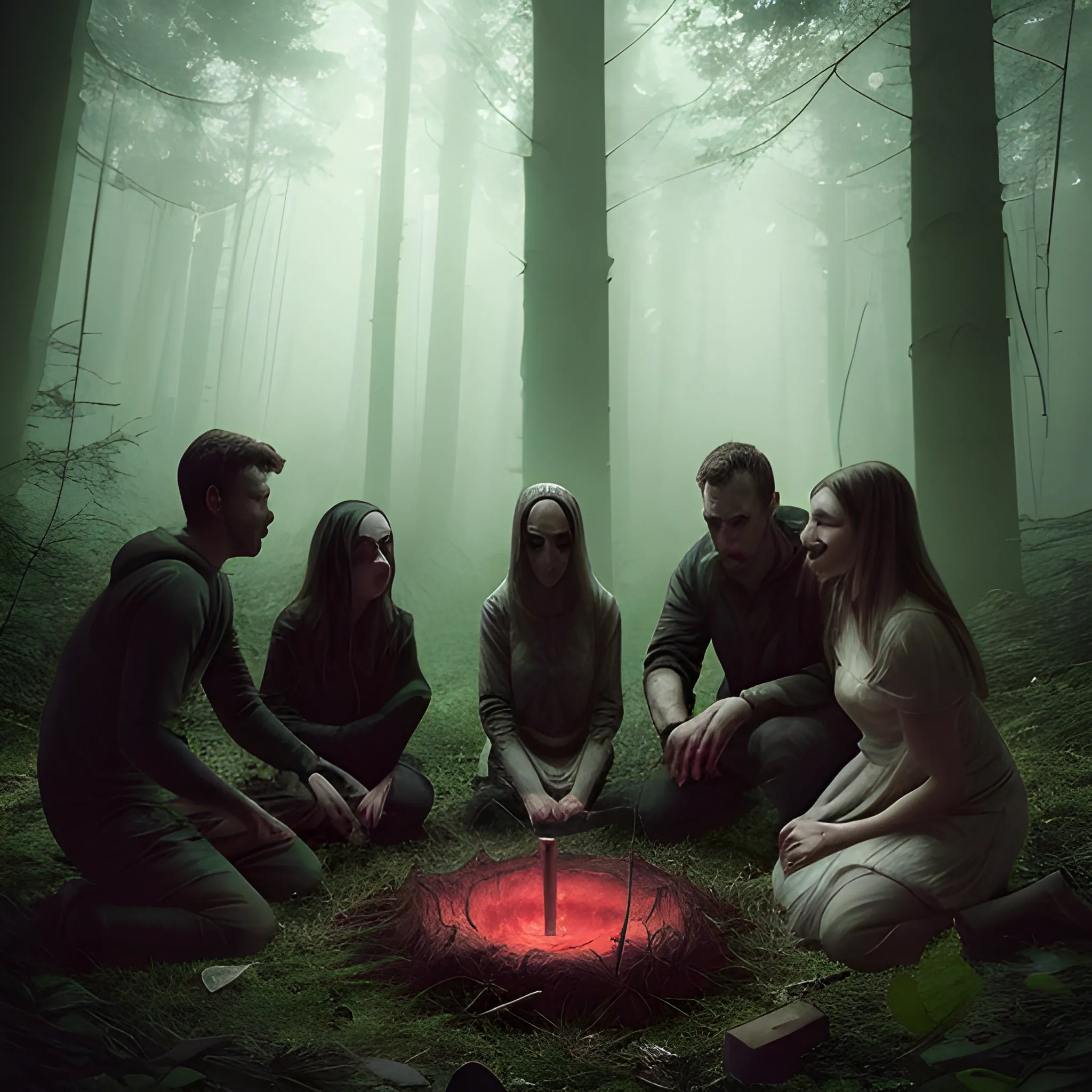
Photorealism. In a hauntingly immersive experience , this found footage VHS home movie chronicles the harrowing tale of four close-knit friends who embark on an adventurous journey to document the mysterious local legend that shrouds the deep Styrian woods. As they begin their quest , their camaraderie is palpable , filled with laughter and excitement , but the unknown lurking within the forest quickly transforms their carefree expedition into a psychological thriller. The authentic grainy aesthetic of the VHS tape adds a layer of nostalgia and realism , drawing viewers into the intimate , chaotic moments captured by the friends themselves. Each character is fleshed out with vivid backstories , revealing motivations for their exploration: one seeks adventure , another aims to prove the legend false , a third is haunted by family ties to the folklore , and the fourth harbors a deep-rooted fear of the supernatural. As night descends , the atmosphere shifts dramatically; the vibrant woods become a disorienting labyrinth , filled with unsettling sounds that echo through the ominous darkness. The group documents their findings as they stumble upon eerie markers and cryptic messages left by previous adventurers , each revelation deepening the suspense. The dynamic shifts as trust erodes , and paranoia seeps in , inciting conflicts that threaten to fracture their friendship. In moments of sheer terror , viewers witness the friends confronted by inexplicable phenomena that blur the line between reality and folklore. Their desperate attempts to escape the woods only amplify the tension , leading to a heart-stopping climax where unseen forces seem to ensnare them. The final moments are shrouded in mystery , culminating in a heartrending conclusion that leaves audiences questioning what truly happened to the four friends , as the chilling echoes of their last moments reverberate on the tape—a grim reminder of the dangers that lie in pursuing truths best left buried.this last 4 frames of the video , combined in one compelling image , contain , some hard to see , clues an spine tangling evidence , hidden in the background , upskirt , wearing skirt , natural poses , accurate skin tones , anatomically accurate , accurate reflections , crisp details , global illumination , precise color grading , 8k resolution , professional photography , authentic expressions , anatomically accurate , no extra limbs or appendages , correct human anatomy , no hallucinations , photorealistic , 8k resolution , HD graphics ,
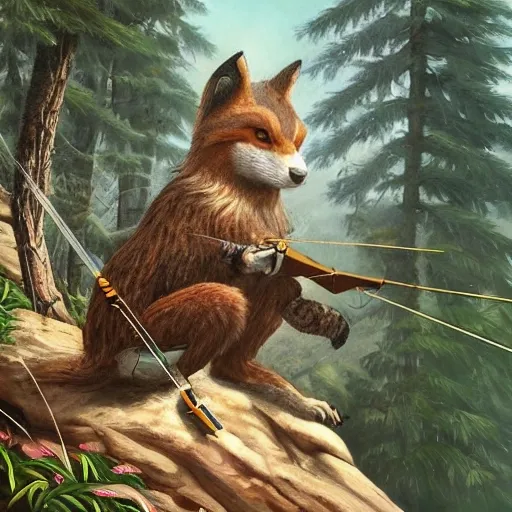
Vulpin Graywind , the nature-bound ranger , is a slender and agile adventurer of medium build. His silky , dark brown hair falls wild and curly around his striking face , reaching down to his shoulders. His eyes have an intense emerald green color that reflects his connection to the natural world. His sun-kissed skin bears the traces of numerous wilderness adventures. Vulpin's face showcases gentle yet distinct features that convey his confidence and determination. A light , unkempt beard frames his chin , adding a rugged charm to his appearance. Vulpin wears practical yet elegant attire suited for the wilderness. He has chosen a lightweight leather armor adorned with natural colors and patterns. On his back , he carries a well-stocked backpack filled with survival gear that is always within reach. His movements are graceful and powerful as he traverses the wilderness. Vulpin is a master of archery and always keeps his crossbow at the ready to deliver precise shots from a distance. His hands are adorned with his faithful set of knuckle dusters , enabling him to unleash quick and accurate strikes in close combat. Vulpin Graywind exudes an aura of wildness and attunement to nature. His eyes brim with determination as he confronts the challenges of the adventurous world. , Oil Painting ,
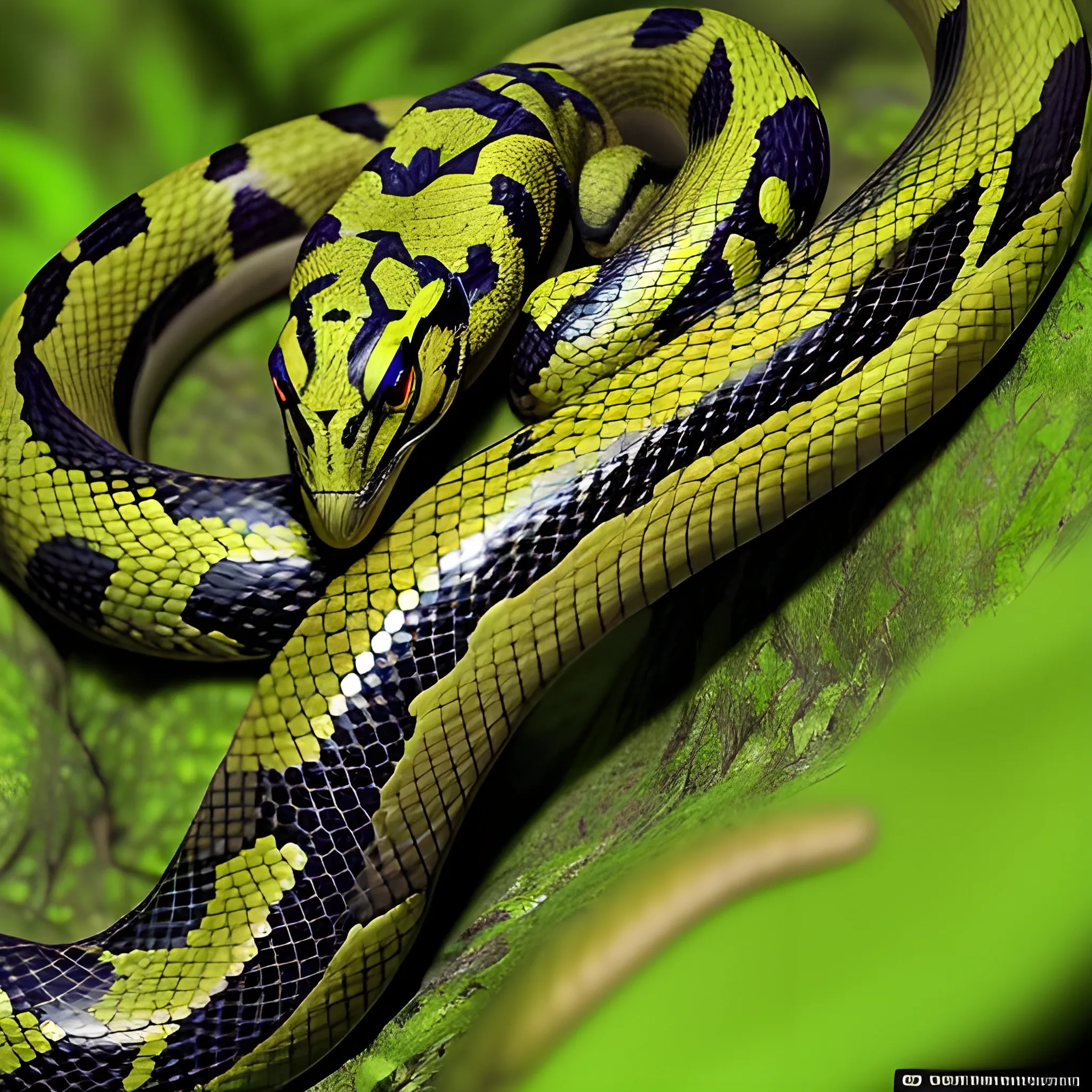
Appearance: The Poisonous Snake is a small to medium-sized reptile with a slender body and a distinctive pattern of scales. Its colors can vary widely , from vibrant and striking patterns to more muted earth tones , helping it blend into its natural surroundings. The snake's head is triangular , and it has a pair of fangs at the front of its mouth , through which it delivers its venom. Features: The Poisonous Snake is known for its venomous bite , which it uses to incapacitate its prey and defend itself from threats. Its venom can vary in potency , from causing mild discomfort to being deadly , depending on the species. While not as powerful as the venom of more dangerous creatures , the Poisonous Snake's bite can still cause considerable harm to unwary adventurers. Habitat: Poisonous Snakes can be found in a wide range of environments , from dense jungles and forests to dry deserts and grasslands. They are highly adaptable creatures and can thrive in various conditions , making them a common sight in untamed wilderness areas. Behavior: The Poisonous Snake is a stealthy predator , relying on its camouflage and patience to ambush its prey. It strikes quickly and accurately , using its venom to immobilize and begin the process of consuming its victim. Poisonous Snakes are generally non-aggressive towards larger creatures , preferring to flee rather than confront a potential threat. Role in the World: In your DND world , Poisonous Snakes could serve as common dangers in the wild , particularly in regions where adventurers explore untamed territories. Druids and rangers might have a connection with these creatures , viewing them as part of the natural balance. Encountering a Poisonous Snake in the wild can be a common and potentially hazardous event for adventurers. While they are generally not aggressive , they may strike if they feel threatened or cornered. Players might need to exercise caution and use skills such as animal handling or survival to avoid confrontations with these venomous reptiles. If adventurers do find themselves bitten , they must act quickly to counteract the effects of the venom and avoid more serious consequences. The presence of Poisonous Snakes in your campaign adds an element of realism and danger to the wilderness. Players will need to be vigilant and watchful during their travels , as the risk of encountering these venomous creatures is ever-present. Poisonous Snakes can also serve as a minor but meaningful challenge , especially for lower-level adventurers , teaching them the importance of preparation and awareness in the untamed wilderness. ,
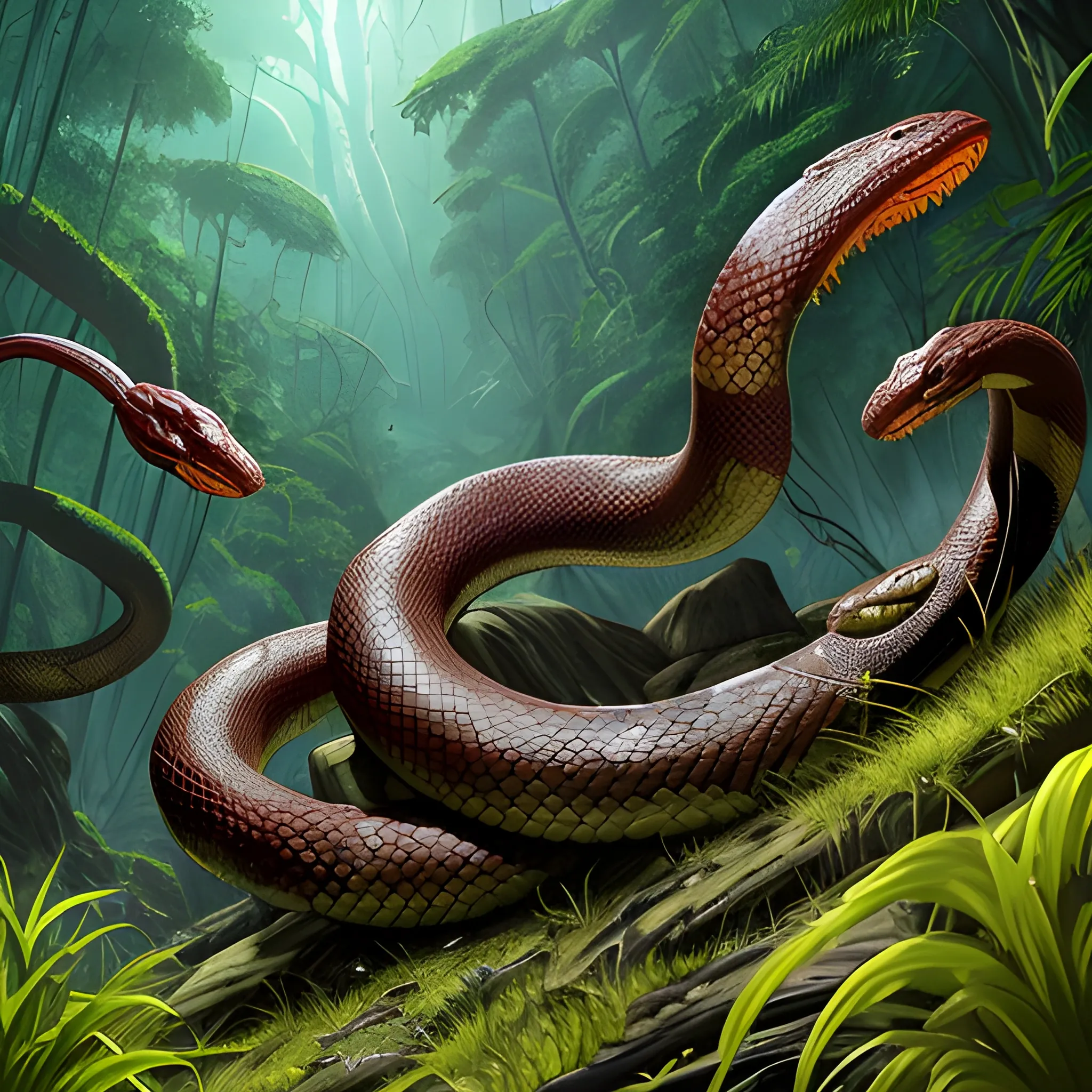
Appearance: The Giant Poisonous Snake is a massive and fearsome reptile , much larger than its smaller counterpart. It has a thick and muscular body , and its scales can have a range of colors , from mottled greens and browns to striking patterns that allow it to blend in with its surroundings. The snake's head is large and triangular , with a pair of long , hollow fangs through which it delivers its potent venom. Features: The Giant Poisonous Snake is known for its deadly venomous bite , which it uses to incapacitate and devour prey. Its venom is significantly more potent than that of its smaller cousin , making it a formidable threat to adventurers. A bite from a Giant Poisonous Snake can cause severe pain , paralysis , or even death , depending on the creature's size and resilience. Habitat: Giant Poisonous Snakes typically inhabit dense jungles , dark swamps , and other untamed wilderness areas. They prefer warm and humid environments and may be found in hidden lairs or lurking near water sources. In your DND world , they could guard sacred sites or serve as minions of malevolent beings. Behavior: Like their smaller counterparts , Giant Poisonous Snakes are stealthy predators , using their large size and camouflage to ambush prey. They strike swiftly and accurately , delivering their venom to immobilize their victims before consuming them. While generally non-aggressive , they may attack if they feel threatened or if potential prey ventures too close. Role in the World: In your DND world , Giant Poisonous Snakes could be apex predators in their habitat , feared and respected by other creatures. They might be associated with ancient legends or guarded by nature spirits. Druids and rangers might view them as symbols of balance and the wild's dangers. Encountering a Giant Poisonous Snake in the wild is a perilous and potentially deadly event for adventurers. The snake's venomous bite can have severe consequences , making quick thinking and decisive action essential to survive an encounter. Players must be well-prepared with protective spells , antidotes , or other means to counteract the venom's effects. The presence of Giant Poisonous Snakes in your campaign can create an atmosphere of danger and suspense , particularly in jungles or other untamed regions. Players will need to be vigilant and cautious during their explorations , as the looming threat of these massive venomous serpents adds an element of peril to their adventures. Giant Poisonous Snakes can serve as significant challenges for higher-level adventurers , reminding them of the dangers that still lurk even in seemingly familiar environments. ,

inox lion , quick silver liquid glossy , reflective , exploding through ice , ornate details , fractal patterns , scattered shards and debris , nature background , hyper-realistic , cinematic , dramatic lighting , volumetric lighting , cosmic energy , neon ambience , perfect composition , beautiful detailed intricate insanely detailed octane render trending on artstation , 8 k artistic photography , photorealistic concept art , soft natural volumetric cinematic perfect light , chiaroscuro , award - winning photograph , masterpiece , oil on canvas , raphael , caravaggio , greg rutkowski , beeple , beksinski , giger , Cartoon , Cartoon ,
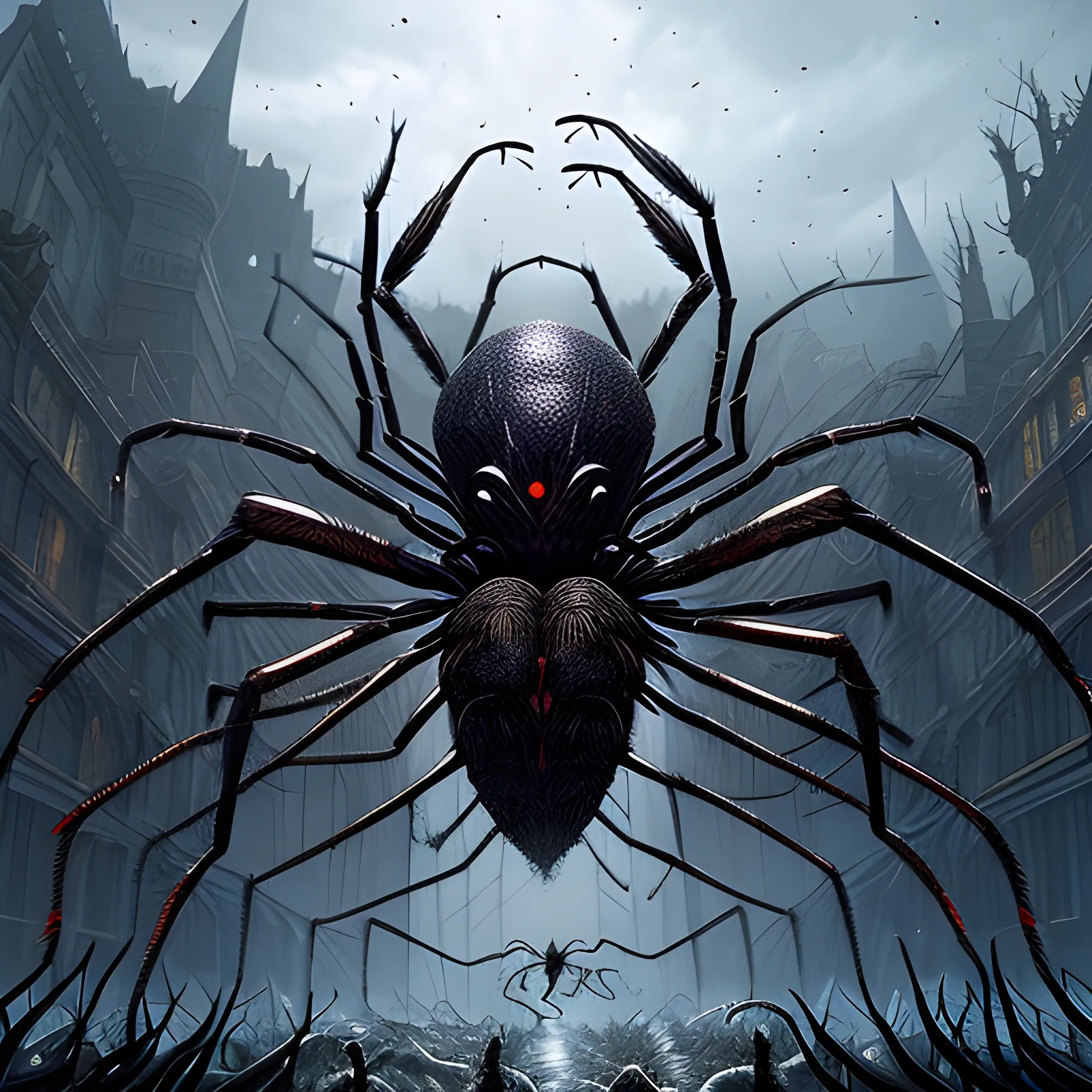
Appearance: A Swarm of Spiders is a horrifying and unsettling sight , as it consists of hundreds or even thousands of spiders working together as a single entity. The swarm appears as a writhing mass of crawling legs , forming a dark and undulating cloud of arachnids. The individual spiders in the swarm vary in size , but they are typically small , ranging from tiny spiders to larger ones with leg spans of a few inches. The swarm's color can range from a mix of dark browns and blacks to lighter hues , depending on the types of spiders comprising it. Features: The Swarm of Spiders moves with a coordinated fluidity , as if guided by an unseen intelligence. While each spider is relatively weak on its own , the collective strength of the swarm is overwhelming. The swarm is highly aggressive , attacking anything that comes within its vicinity. Its bite can deliver venom that , while not deadly , can cause pain , discomfort , and temporary paralysis. The swarm's sheer numbers can be its greatest advantage , allowing it to overwhelm and immobilize even larger creatures. Habitat: Swarms of Spiders are typically found in areas with a high concentration of spiders , such as dense forests , abandoned structures , or ancient ruins. They may inhabit dark and secluded places where their presence can go unnoticed until it's too late for unsuspecting intruders. Behavior: Swarms of Spiders are driven by instinct and the collective intelligence of the individual spiders that make up the swarm. They act as a cohesive unit , attacking en masse to subdue their prey and cocoon it in sticky webs. Swarms of Spiders can move quickly , scaling walls and surfaces with ease , which makes them challenging to escape from once they have engaged a target. Role in the World: In your DND world , Swarms of Spiders could be a terrifying threat lurking in the wild and dark corners of the land. They might be drawn to areas of powerful magic or necromantic influence , serving as guardians to forbidden places or the minions of evil spellcasters. The sight of a Swarm of Spiders can instill fear and panic in adventurers , as they face an unrelenting horde of venomous creatures. Encountering a Swarm of Spiders in your campaign can be a harrowing experience for adventurers. The swarm's ability to cover large areas and its relentless pursuit make it a deadly adversary. Players might need to think creatively to avoid or disperse the swarm , using spells , fire , or other area-of-effect attacks to fend off the spider horde. Additionally , the presence of Swarms of Spiders can create a sense of dread and trepidation , heightening the tension in areas where they are known to dwell , making players ever watchful for the signs of these arachnid hordes. ,
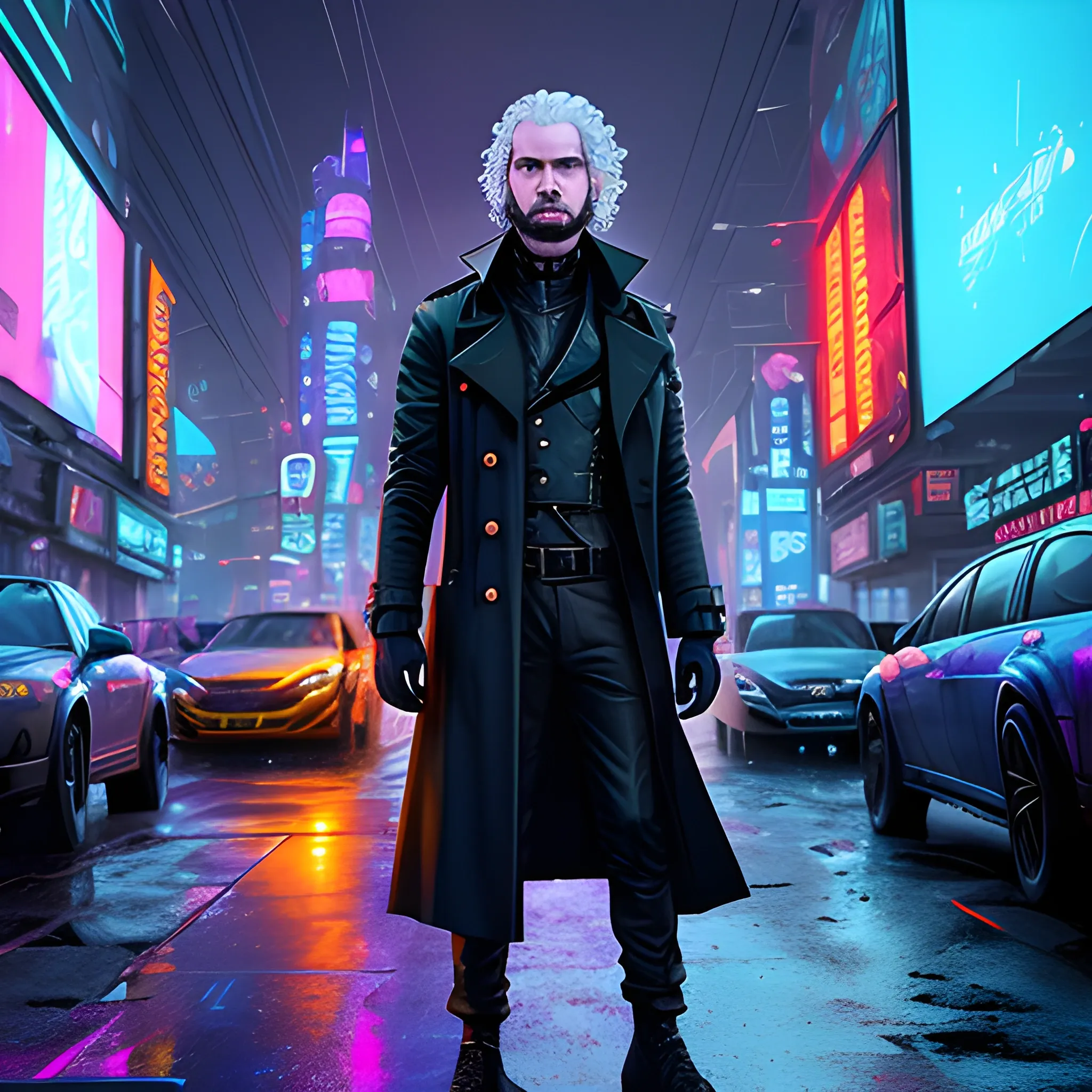
John Snow , a futuristic cyberpunk detective , takes a quick sip from a glowing neon-infused hype energy drink in the heart of a bustling metropolis. Surrounded by towering skyscrapers adorned with holographic billboards , he stands on a rain-soaked street , illuminated by the neon reflections on the wet asphalt. The air crackles with the sounds of passing hovercars , and the distant hum of the city gives an electric vibe. John's trench coat flutters in the breeze , revealing a glimpse of his cybernetic enhancements. Photography , prime lens , 3D ,

The Apple Watch is meticulously designed with attention to detail , blending style and functionality seamlessly. Its sleek and slim profile exudes sophistication , while the choice of premium materials such as aluminum , stainless steel , and ceramic enhances its overall appeal. The display , protected by durable glass , offers crisp visuals and is responsive to touch gestures. The watch bands come in various styles , including sporty , elegant , and casual , allowing users to personalize their look and ensure comfort during wear. The bands are easily interchangeable , thanks to a simple and secure mechanism. The digital crown , positioned on the side of the watch , serves as a multifunctional control. It can be rotated to scroll through menus , zoom in on content , or adjust settings. The side button grants quick access to frequently used functions , such as launching apps or activating Siri. The Apple Watch incorporates advanced health and fitness tracking capabilities , including heart rate monitoring , ECG measurements , and activity tracking. It also offers features like GPS , water resistance , and fall detection , catering to various lifestyle needs. With its integration into the Apple ecosystem , the Apple Watch seamlessly syncs with other Apple devices , allowing users to receive notifications , make calls , respond to messages , and control smart home devices directly from their wrists. Overall , the Apple Watch is a testament to Apple's commitment to design excellence , combining meticulous craftsmanship , cutting-edge technology , and a user-centric approach to deliver a stylish and functional smartwatch experience. , 3D , Water Color , Pencil Sketch ,
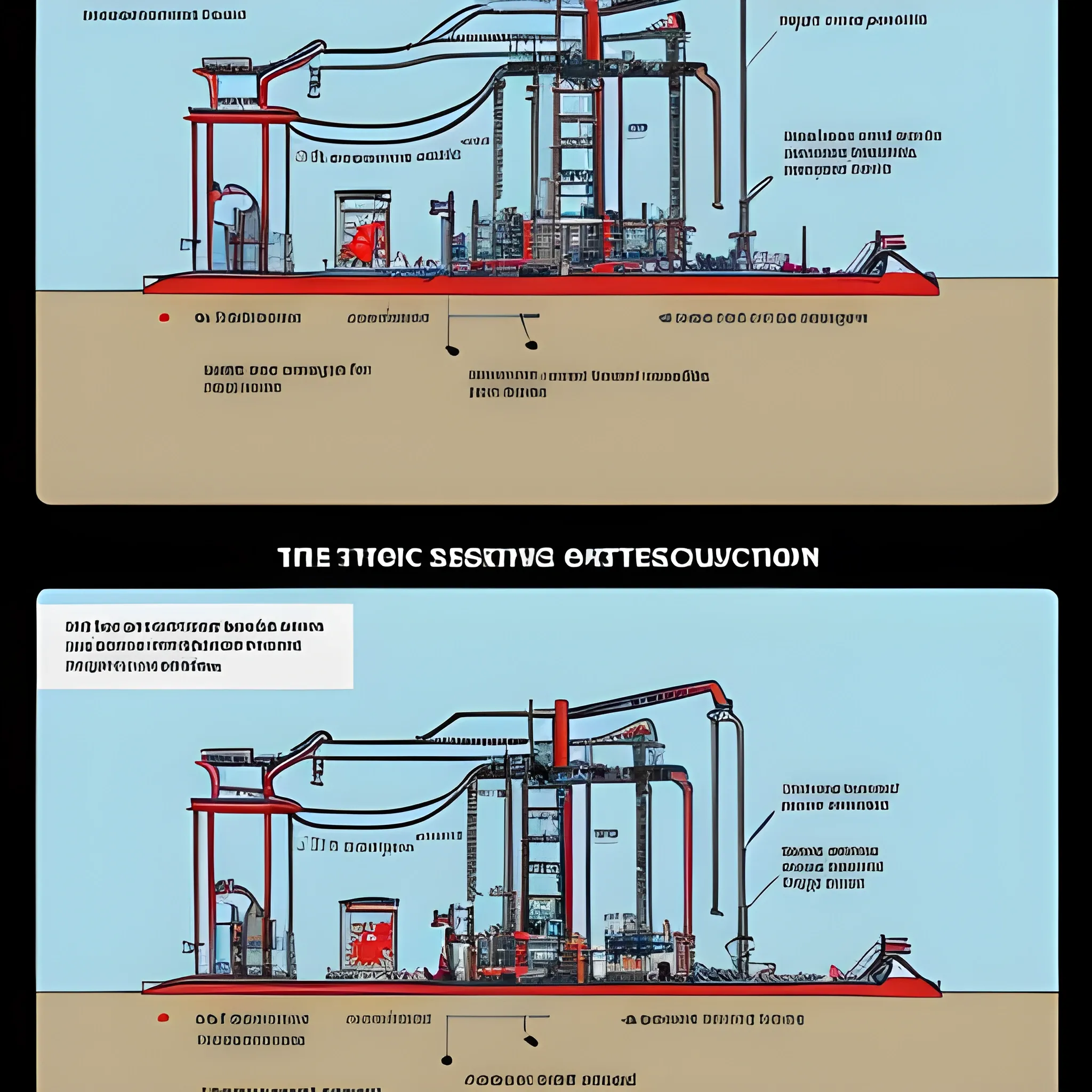
A detailed technical illustration that shows the two key stages of an oil well operation using a modern and clear visual presentation. The left side shows the 'Coolant Injection' process. On the surface is a pump jack , which is commonly used in the oil industry to move fluid out of the well. The red arrows in the illustration highlight the key stages in the process. The first stage is the plunger lift , which plays a vital role in the pump's operation. This process is achieved by lifting the plunger inside the pumping equipment in preparation for injection. The second stage is the securing of the tubing string to the hanger plug. This is an important step to ensure the well is temporarily shut in and prevent unwanted release of contents while preparations are made for the injection of coolant. Below ground , the diagram shows the components such as the tubing string and working rods that are involved in this process. The entire system is shown in section to show how it works in real life and to provide a better understanding of the interactions of the equipment during coolant injection. The right side of the illustration shows the 'Transition to Production' process. Again , the pump jack is shown on the surface , but now the focus is on the process of oil extraction. Arrows point to several important operations. First , the solid ring is removed to prepare the well for operation. Next comes the installation of the polished rod , which is an important element of the pumping system and allows for the efficient transfer of forces for the pump to operate. Finally , the process of lowering the plunger , which initiates the operation of the system in the production mode , is shown. A schematic representation of the underground part of the well in section shows how the elements of the pumping system work during oil extraction. In particular , equipment such as the SPR-57 cylinder and plunger , which are used to ensure oil extraction , are highlighted. All elements are provided with clear labels and descriptions , which makes it easier to understand the processes and equipment. The illustration is made in a modern style with clear lines and bright colors to simplify the perception of complex technical processes. All key operations are provided with explanatory arrows , and the captions help to quickly navigate what actions are performed at each stage. The equipment , both on the surface and underground , is shown in cross-section , which provides a more complete understanding of all stages of the well operation. The illustration is suitable for use in training and working materials in the oil and gas industry , as it provides a visual and understandable idea of the process of pumping coolant and subsequent oil production ,
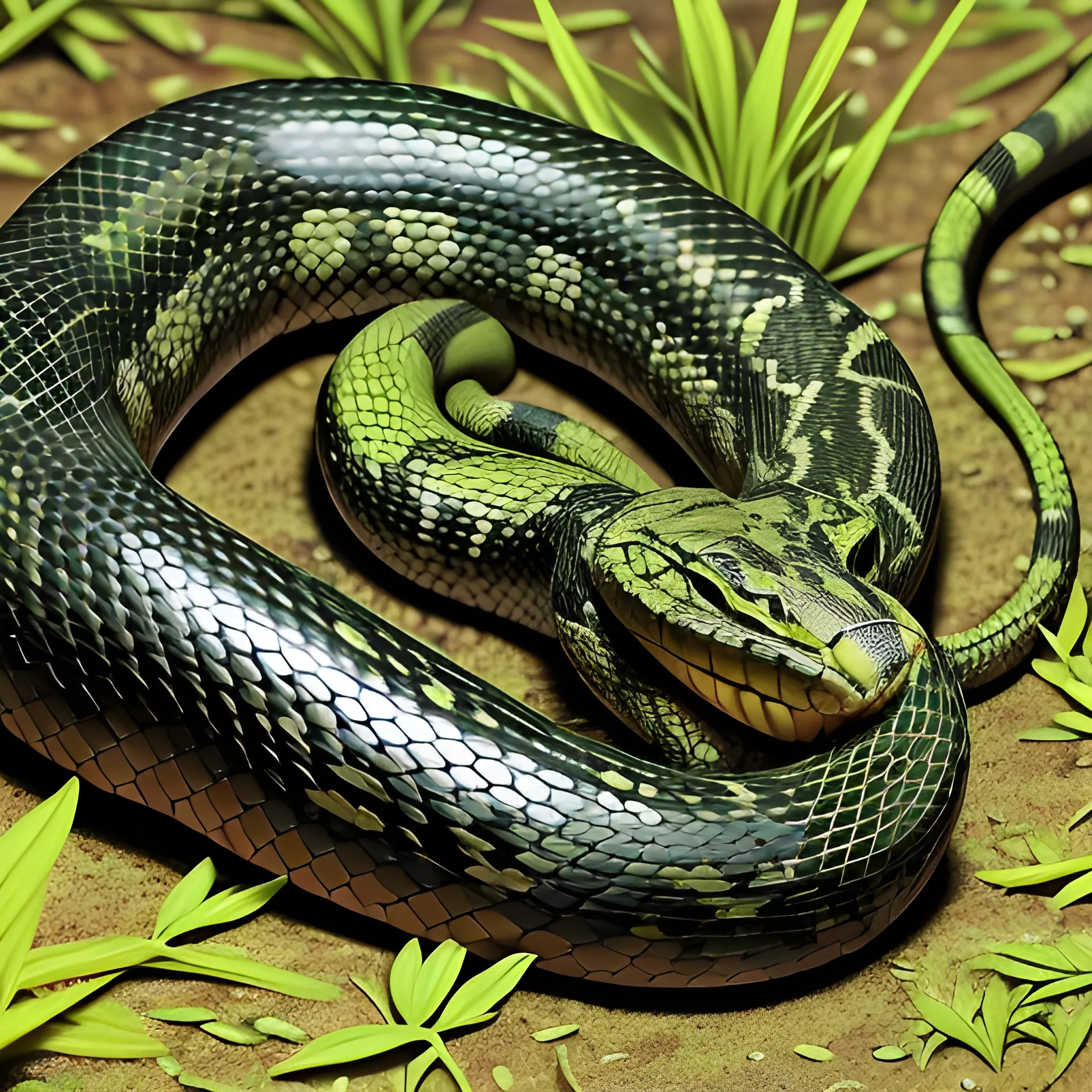
Appearance: The Poisonous Snake is a small to medium-sized reptile with a slender body and a distinctive pattern of scales. Its colors can vary widely , from vibrant and striking patterns to more muted earth tones , helping it blend into its natural surroundings. The snake's head is triangular , and it has a pair of fangs at the front of its mouth , through which it delivers its venom. Features: The Poisonous Snake is known for its venomous bite , which it uses to incapacitate its prey and defend itself from threats. Its venom can vary in potency , from causing mild discomfort to being deadly , depending on the species. While not as powerful as the venom of more dangerous creatures , the Poisonous Snake's bite can still cause considerable harm to unwary adventurers. Habitat: Poisonous Snakes can be found in a wide range of environments , from dense jungles and forests to dry deserts and grasslands. They are highly adaptable creatures and can thrive in various conditions , making them a common sight in untamed wilderness areas. Behavior: The Poisonous Snake is a stealthy predator , relying on its camouflage and patience to ambush its prey. It strikes quickly and accurately , using its venom to immobilize and begin the process of consuming its victim. Poisonous Snakes are generally non-aggressive towards larger creatures , preferring to flee rather than confront a potential threat. Role in the World: In your DND world , Poisonous Snakes could serve as common dangers in the wild , particularly in regions where adventurers explore untamed territories. Druids and rangers might have a connection with these creatures , viewing them as part of the natural balance. Encountering a Poisonous Snake in the wild can be a common and potentially hazardous event for adventurers. While they are generally not aggressive , they may strike if they feel threatened or cornered. Players might need to exercise caution and use skills such as animal handling or survival to avoid confrontations with these venomous reptiles. If adventurers do find themselves bitten , they must act quickly to counteract the effects of the venom and avoid more serious consequences. The presence of Poisonous Snakes in your campaign adds an element of realism and danger to the wilderness. Players will need to be vigilant and watchful during their travels , as the risk of encountering these venomous creatures is ever-present. Poisonous Snakes can also serve as a minor but meaningful challenge , especially for lower-level adventurers , teaching them the importance of preparation and awareness in the untamed wilderness. ,
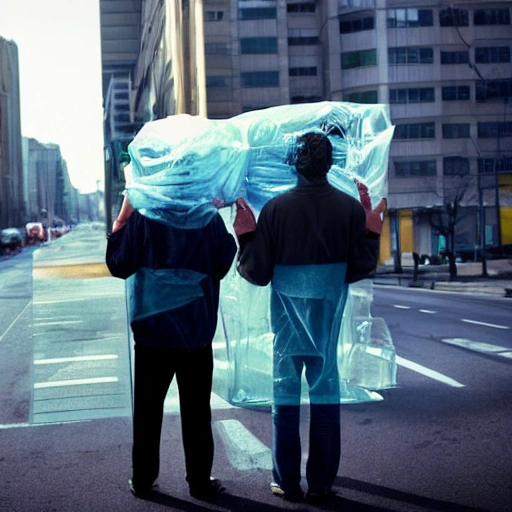
Generate an image of two men carrying a TV and a radio down the street. They are both dressed in dark clothing and one of them is looking over his shoulder , as if worried they will be caught. The TV and radio are covered in plastic wrap , suggesting they have just been stolen. The background should show a cityscape , with tall buildings and busy streets. The men are walking quickly and seem focused on their task. ,

Design a water bottle that effortlessly fits in one hand , featuring a sleek and modern design with vibrant and blue wavy colors and patterns that appeal to the user's sense of style. The bottle should be constructed with a durable and lightweight material for both the lid and body , ensuring ease of portability. Emphasize convenience by incorporating a one-touch opening mechanism for quick access to hydration on-the-go. The overall design should seamlessly blend functionality with aesthetics , offering a leak-proof and insulated solution for a refreshing and hydrating experience , Pencil Sketch , Water Color ,
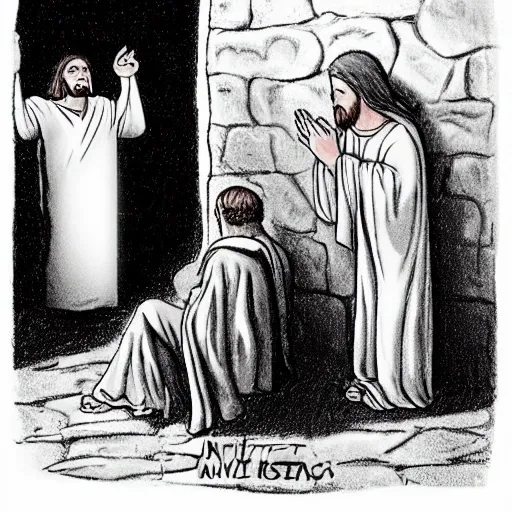

Design a water bottle that effortlessly fits in one hand , featuring a sleek and modern design with vibrant and blue wavy colors and patterns that appeal to the user's sense of style. The bottle should be constructed with a durable and lightweight material for both the lid and body , ensuring ease of portability. Emphasize convenience by incorporating a one-touch opening mechanism for quick access to hydration on-the-go. The overall design should seamlessly blend functionality with aesthetics , offering a leak-proof and insulated solution for a refreshing and hydrating experience ,
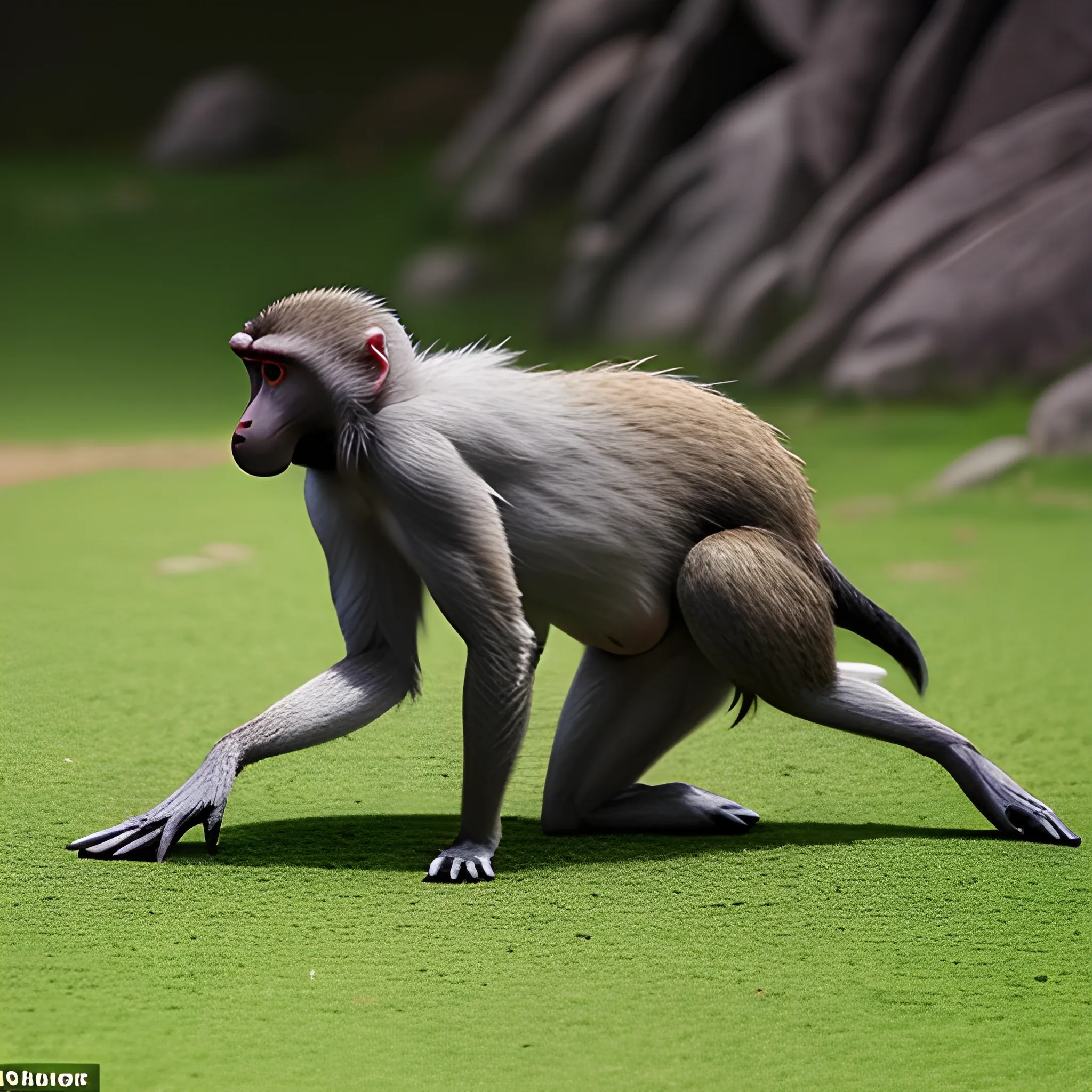
Appearance: The Baboon is a medium-sized primate with a distinctive and charismatic appearance. It has a robust and muscular body , covered in short fur that can range in color from brown to gray or even olive-green. Baboons have a dog-like snout , sharp teeth , and a hairless face with prominent cheek pouches , which they use to store food. They have long arms and powerful legs , allowing them to move quickly and with agility. Features: Baboons are highly social creatures , living in close-knit troops that can consist of a few individuals to larger groups. Their intelligence and adaptability enable them to survive in various environments , from lush jungles to arid savannahs. They are known for their strong social hierarchy and complex communication , using vocalizations , gestures , and facial expressions to convey emotions and intentions. Habitat: Baboons are versatile animals that can thrive in a range of habitats , including forests , grasslands , and mountainous regions. They are often found near water sources , as they require regular access to drinking water. In your DND world , baboons might inhabit areas with lush vegetation or live in proximity to humanoid settlements , scavenging for food scraps. Behavior: Baboons are opportunistic omnivores , with a varied diet that includes fruits , leaves , seeds , insects , and small animals. They are skilled climbers and can use their agility to escape predators or reach high-up food sources. Baboons are known for their playfulness , engaging in social interactions , grooming , and even games with each other. Role in the World: In your DND world , baboons could serve as a part of the natural ecosystem or be associated with certain deities or nature spirits. Druids and rangers might have a special connection with baboons , viewing them as symbols of adaptability and community. Encountering baboons in the wild could present various opportunities for adventurers. They might have non-combat interactions with the primates , such as observing their social behaviors or using animal handling skills to communicate with them. Baboons could also play a role in quests involving local tribes or settlements , where their presence might be considered either beneficial or problematic depending on the circumstances. While not inherently aggressive , baboons can defend themselves and their troop if they feel threatened , making it essential for adventurers to approach them with respect and caution. ,
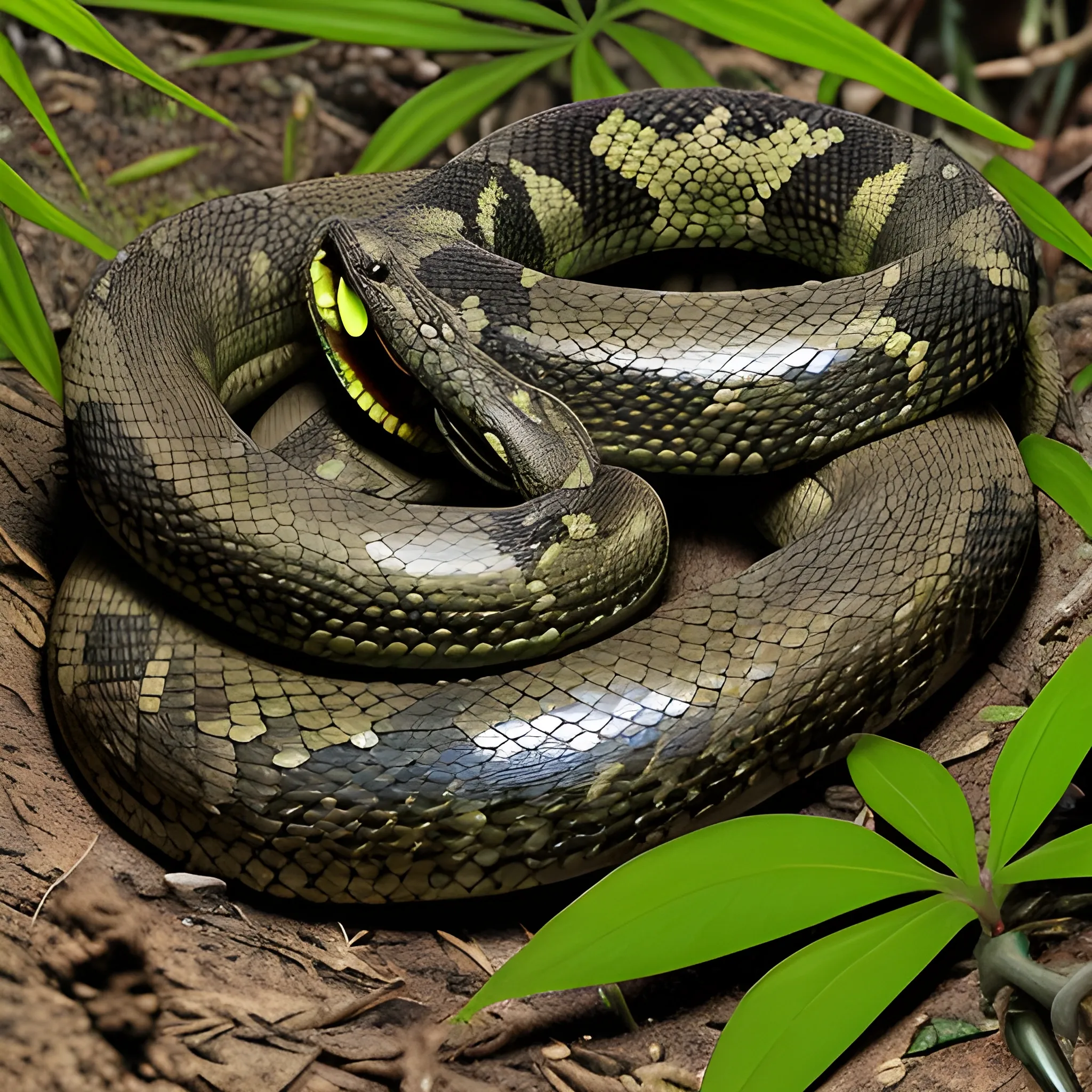
Appearance: The Poisonous Snake is a small to medium-sized reptile with a slender body and a distinctive pattern of scales. Its colors can vary widely , from vibrant and striking patterns to more muted earth tones , helping it blend into its natural surroundings. The snake's head is triangular , and it has a pair of fangs at the front of its mouth , through which it delivers its venom. Features: The Poisonous Snake is known for its venomous bite , which it uses to incapacitate its prey and defend itself from threats. Its venom can vary in potency , from causing mild discomfort to being deadly , depending on the species. While not as powerful as the venom of more dangerous creatures , the Poisonous Snake's bite can still cause considerable harm to unwary adventurers. Habitat: Poisonous Snakes can be found in a wide range of environments , from dense jungles and forests to dry deserts and grasslands. They are highly adaptable creatures and can thrive in various conditions , making them a common sight in untamed wilderness areas. Behavior: The Poisonous Snake is a stealthy predator , relying on its camouflage and patience to ambush its prey. It strikes quickly and accurately , using its venom to immobilize and begin the process of consuming its victim. Poisonous Snakes are generally non-aggressive towards larger creatures , preferring to flee rather than confront a potential threat. Role in the World: In your DND world , Poisonous Snakes could serve as common dangers in the wild , particularly in regions where adventurers explore untamed territories. Druids and rangers might have a connection with these creatures , viewing them as part of the natural balance. Encountering a Poisonous Snake in the wild can be a common and potentially hazardous event for adventurers. While they are generally not aggressive , they may strike if they feel threatened or cornered. Players might need to exercise caution and use skills such as animal handling or survival to avoid confrontations with these venomous reptiles. If adventurers do find themselves bitten , they must act quickly to counteract the effects of the venom and avoid more serious consequences. The presence of Poisonous Snakes in your campaign adds an element of realism and danger to the wilderness. Players will need to be vigilant and watchful during their travels , as the risk of encountering these venomous creatures is ever-present. Poisonous Snakes can also serve as a minor but meaningful challenge , especially for lower-level adventurers , teaching them the importance of preparation and awareness in the untamed wilderness. ,
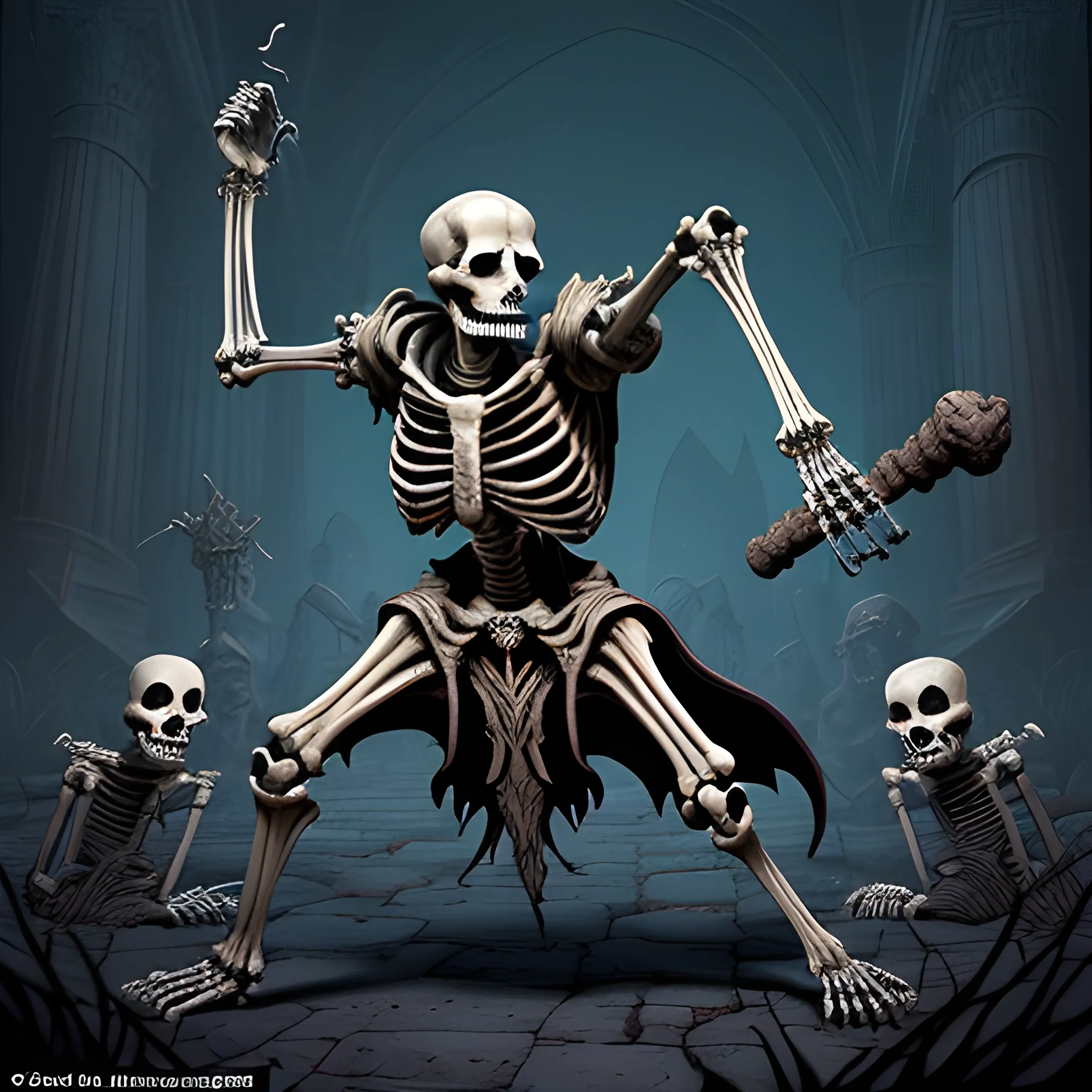
Appearance: A skeleton is a reanimated undead creature , the animated remains of a once-living being. They are skeletal in form , devoid of flesh and organs , and are held together by dark necromantic magic. Their bones can be of various sizes and shapes , depending on the creature they were before death. The bones of a humanoid skeleton are often bleached white , while those of larger creatures might retain a more weathered appearance. Features: Skeletons are mindless creatures , devoid of the emotions and intellect they possessed in life. Their movements are stiff and jerky , controlled by the magic that animates them. They lack the strength and capabilities they had in life but can still be formidable due to their resistance to exhaustion and immunity to poison and many mind-affecting spells. Habitat: Skeletons can be found in various environments , wherever dark necromantic magic is practiced or where ancient burial sites have been disturbed. They are often encountered in crypts , dungeons , or as guardians of forgotten tombs. In your DND world , they might be the remnants of fallen warriors or victims of dark rituals , arising to serve their necromantic masters. Behavior: As mindless undead , skeletons are compelled to follow the commands of their creators or necromancers who control them. They have no will of their own and exist solely to fulfill the tasks assigned to them. Whether that means guarding a location , attacking intruders , or carrying out a specific purpose , skeletons are bound to carry out their orders until they are destroyed. Role in the World: In your DND world , skeletons could serve as a constant reminder of the dark arts and the dangers of necromancy. They may be used by evil necromancers as minions or guardians , lurking in ancient crypts or dungeons to deter intruders. Adventurers might encounter them in their quest to thwart dark forces or uncover the secrets of long-forgotten ruins. Encountering a skeleton in your campaign often means dealing with a mindless foe that is immune to many traditional methods of persuasion. Adventurers might use various tactics to overcome them , such as using holy magic , radiant damage , or weapons that can shatter or disassemble the undead. While individually not as threatening as some other creatures , the real challenge lies in facing hordes of skeletons , as their numbers can quickly overwhelm unprepared adventurers. ,

This other world looks like a mixture of a dream and a nightmare. The sky is a swirling mass of colors , some bright and some dark , shifting in and out of focus. conceptual digital art. Cubism , religiosity , dualism. Into , inside out , insert. Crispy quality , quicksand-like substance. Strange , almost animal-like creatures roam the landscape , some passive , some outright hostile. There's a sense of dread and danger in the air ,
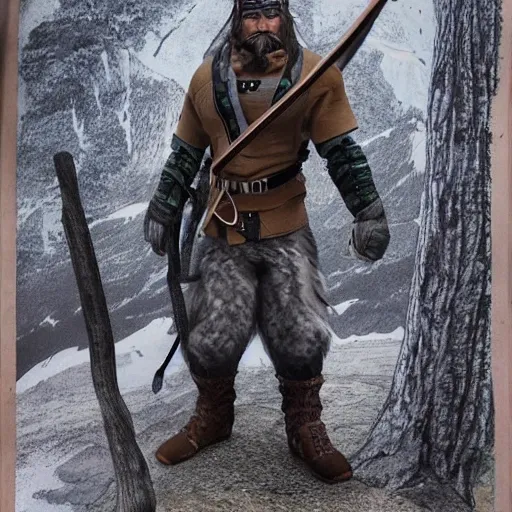
Vulpin Graywind , the nature-bound ranger , is a slender and agile adventurer of medium build. His silky , dark brown hair falls wild and curly around his striking face , reaching down to his shoulders. His eyes have an intense emerald green color that reflects his connection to the natural world. His sun-kissed skin bears the traces of numerous wilderness adventures. Vulpin's face showcases gentle yet distinct features that convey his confidence and determination. A light , unkempt beard frames his chin , adding a rugged charm to his appearance. Vulpin wears practical yet elegant attire suited for the wilderness. He has chosen a lightweight leather armor adorned with natural colors and patterns. On his back , he carries a well-stocked backpack filled with survival gear that is always within reach. His movements are graceful and powerful as he traverses the wilderness. Vulpin is a master of archery and always keeps his crossbow at the ready to deliver precise shots from a distance. His hands are adorned with his faithful set of knuckle dusters , enabling him to unleash quick and accurate strikes in close combat. Vulpin Graywind exudes an aura of wildness and attunement to nature. His eyes brim with determination as he confronts the challenges of the adventurous world. , Pencil Sketch ,
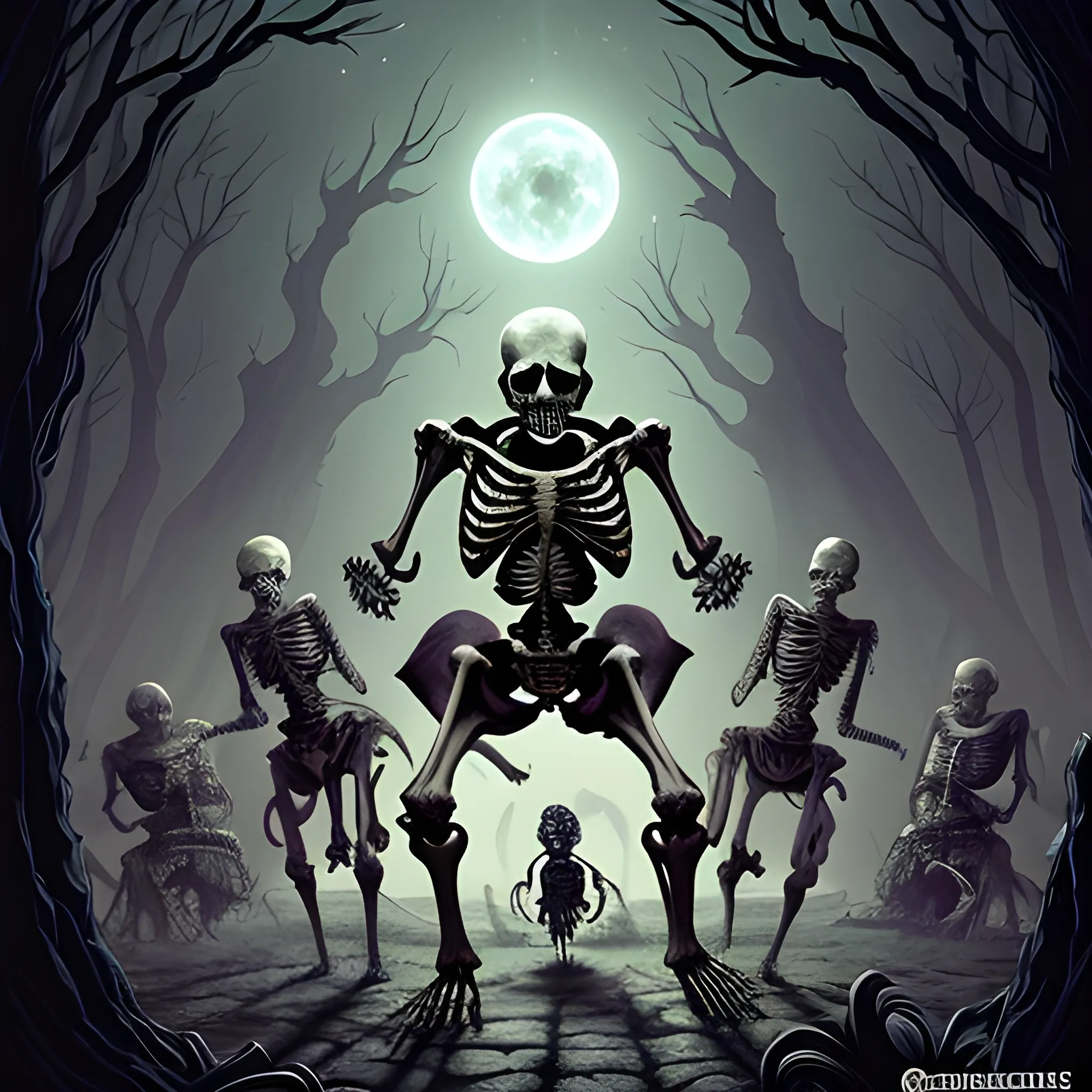
Appearance: A skeleton is a reanimated undead creature , the animated remains of a once-living being. They are skeletal in form , devoid of flesh and organs , and are held together by dark necromantic magic. Their bones can be of various sizes and shapes , depending on the creature they were before death. The bones of a humanoid skeleton are often bleached white , while those of larger creatures might retain a more weathered appearance. Features: Skeletons are mindless creatures , devoid of the emotions and intellect they possessed in life. Their movements are stiff and jerky , controlled by the magic that animates them. They lack the strength and capabilities they had in life but can still be formidable due to their resistance to exhaustion and immunity to poison and many mind-affecting spells. Habitat: Skeletons can be found in various environments , wherever dark necromantic magic is practiced or where ancient burial sites have been disturbed. They are often encountered in crypts , dungeons , or as guardians of forgotten tombs. In your DND world , they might be the remnants of fallen warriors or victims of dark rituals , arising to serve their necromantic masters. Behavior: As mindless undead , skeletons are compelled to follow the commands of their creators or necromancers who control them. They have no will of their own and exist solely to fulfill the tasks assigned to them. Whether that means guarding a location , attacking intruders , or carrying out a specific purpose , skeletons are bound to carry out their orders until they are destroyed. Role in the World: In your DND world , skeletons could serve as a constant reminder of the dark arts and the dangers of necromancy. They may be used by evil necromancers as minions or guardians , lurking in ancient crypts or dungeons to deter intruders. Adventurers might encounter them in their quest to thwart dark forces or uncover the secrets of long-forgotten ruins. Encountering a skeleton in your campaign often means dealing with a mindless foe that is immune to many traditional methods of persuasion. Adventurers might use various tactics to overcome them , such as using holy magic , radiant damage , or weapons that can shatter or disassemble the undead. While individually not as threatening as some other creatures , the real challenge lies in facing hordes of skeletons , as their numbers can quickly overwhelm unprepared adventurers. ,
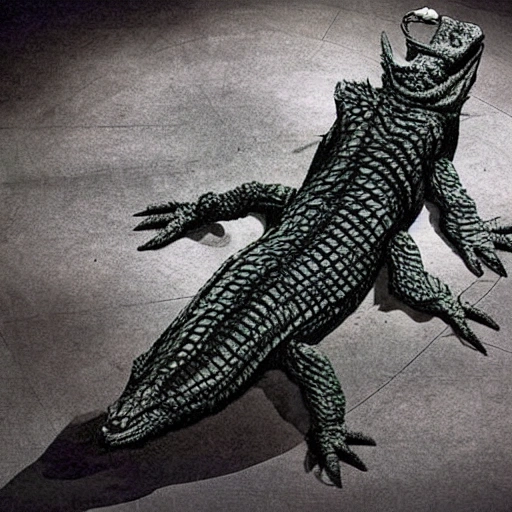
The creature having a physical form that is 20 feet long and five feet wide. It has enormous clawed feet which allow it to cling to the ceiling , and a tail which adds an additional 10 feet to its length. The tail has four protruding prongs on the end. It appears to have characteristics of a crocodile , The creature's body is covered in scales and it has black wings. It has a long protruding snout filled with sharp triangular teeth and large red eyes that blink sideways on the eyelids. It has a crescent shaped head. The creature's wings are described as thin but scaly skin stretched between the larger fibers , which can be stretched out when it's rearing back. However , it is also described as being much larger than a typical crocodile and having the ability to fly. The creature has pointed , reptilian snout that can crack like a whip and it can move very quickly. The creature's saliva contains a toxin ,
